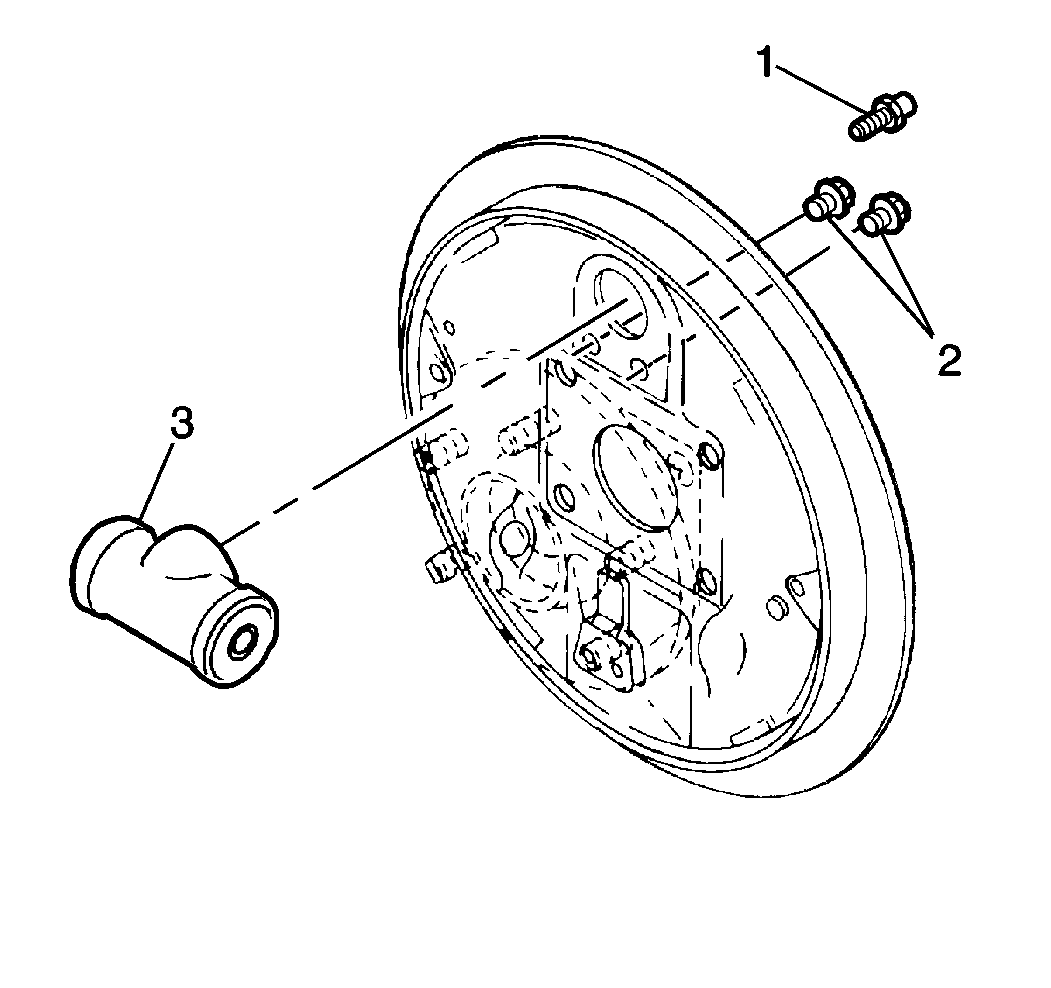Removal Procedure
- Raise and support the vehicle. Refer to Lifting and Jacking the Vehicle in General Information.
- Remove the tire and wheel assembly. Refer to Tire and Wheel Removal and Installation in Tires and Wheels.
- Clean the dirt and foreign material around the following components:
- Remove the brake shoes and linings. Refer to Brake Shoe Replacement .
- Remove the brake hose inlet fitting bolt and discard the copper washers. Plug the opening in the hose in order to prevent brake fluid loss and contamination.
- Remove the wheel cylinder mounting bolts.
- Remove the wheel cylinder.
- Clean the old sealant from the backing plate where the wheel cylinder was installed.

Caution: Keep fingers away from rear brake shoe springs to prevent fingers from being pinched between spring and shoe web or spring and backing plate.
Notice: Do not pry against the splash shield or backing plate in attempt to free the drum. This will bend the splash shield or backing plate. A bent backing plate may cause brake chatter and/or pulsation.
Notice: Do not over stretch the adjuster spring. Damage can occur if the spring is over stretched.
| • | The wheel cylinder inlet (3) |
| • | The pilot |
| • | The bleeder valve (1) |
Installation Procedure
- Apply Loctite® GM P/N 12345382 or equivalent to the wheel cylinder shoulder face that contacts the backing plate.
- Position the wheel cylinder (3) and hold the wheel cylinder in place.
- Install the wheel cylinder mounting bolts (2).
- Install the brake hose and inlet fitting bolt using new copper washers.
- Install the bleeder valve (1).
- Bleed the wheel cylinder. Refer to Hydraulic Brake System Bleeding in Hydraulic Brakes.
- Install the shoes and linings. Refer to Brake Shoe Replacement .
- Install the tire and wheel assembly. Refer to Tire and Wheel Removal and Installation in Tires and Wheels.
- Lower the vehicle.

Notice: Use the correct fastener in the correct location. Replacement fasteners must be the correct part number for that application. Fasteners requiring replacement or fasteners requiring the use of thread locking compound or sealant are identified in the service procedure. Do not use paints, lubricants, or corrosion inhibitors on fasteners or fastener joint surfaces unless specified. These coatings affect fastener torque and joint clamping force and may damage the fastener. Use the correct tightening sequence and specifications when installing fasteners in order to avoid damage to parts and systems.
Tighten
Tighten the wheel cylinder mounting bolts to 20 N·m (15 lb ft).
Tighten
Tighten the nut to 50 N·m (37 lb ft).
Tighten
Tighten the bleeder valve to 13 N·m (115 lb in).
